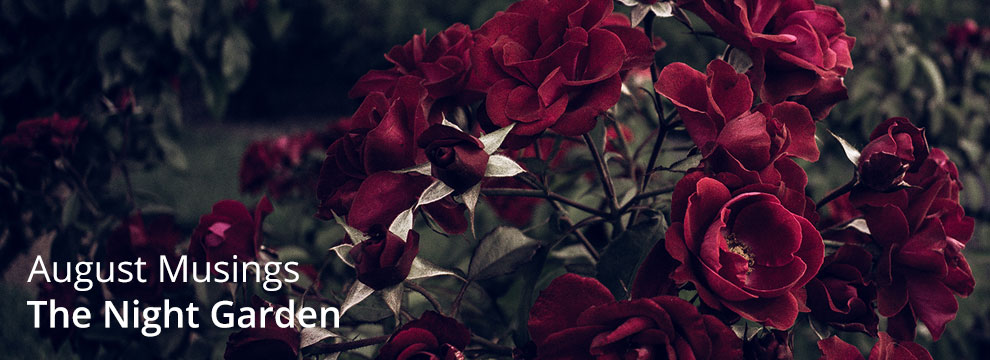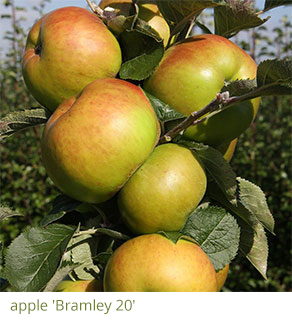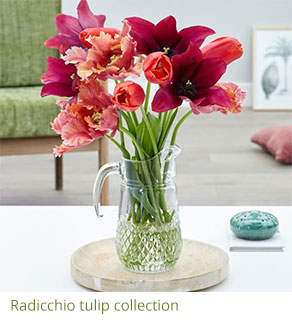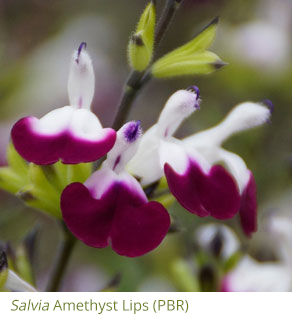|
August is one of the best months to enjoy your garden and it can also be the hottest month of the year. The nights are drawing in already, but they can be balmy as well, so it’s often warm enough to sit outside as dusk falls. If you're lucky enough there may be an enormous full moon and that's when certain plants begin to shine in the gloaming. Silvery mauves, pallid yellows, soft whites and warm apricots glow in the evening light, whether there’s a moon or not, and they’re often fragrant as well because they want to lure in the long-tailed moth.
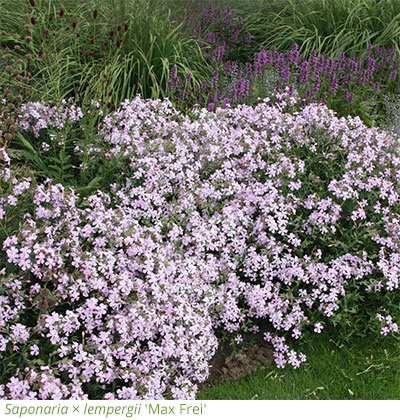 As a result many of these flowers only switch their nectar on as light levels fall and that's when fragrance develops whether it's heady like the lily, sweet like the woodbine, or slightly soapy. Soapwort or Saponaria, can sometimes be seen on roadside verges popping up now and again. The common name of Bouncing Bet describes its random habit and slightly lax stems. The cool-pink flowers switch on their soapy scent at four in the afternoon. Saponaria × lempergii 'Max Frei' is a good garden plant that will curtsey over sunny edges in poorer soil. As a result many of these flowers only switch their nectar on as light levels fall and that's when fragrance develops whether it's heady like the lily, sweet like the woodbine, or slightly soapy. Soapwort or Saponaria, can sometimes be seen on roadside verges popping up now and again. The common name of Bouncing Bet describes its random habit and slightly lax stems. The cool-pink flowers switch on their soapy scent at four in the afternoon. Saponaria × lempergii 'Max Frei' is a good garden plant that will curtsey over sunny edges in poorer soil.
Fragrance is the ultimate stress-buster because it reaches the troubled brain in nanoseconds, often triggering a deeply hidden memory. It's aromatherapy, especially on warm evenings. Our native woodbine, Lonicera periclymenum, has a serious flush in July and then it carries on into the second half of summer. The flowers come in various combinations of rhubarb and custard and each individual flower is rather like an old-fashioned, Victorian hearing trumpet with a long tube and a flared end.
Only long-tongued bees and moths can reach the nectar, secreted right at the end of the tube, although many a short-tongued bumblebee will bite into the back in order to suck up the nectar, the energy drink needed for movement. Berries will follow if a proper pollinator visits. These glossy red affairs rarely last beyond autumn, once discovered by a blackbird or thrush, although I once had waxwings in January on mine.
Shakespeare quotes Titania as saying “so doth the woodbine, sweet honeysuckle entwist” and that sums up the tangled stems that twine upwards, possibly through roses or hedgerows. Often said to be fast, the woodbine takes its time to produce lots of stems. It isn't a mile a minute and these scented beauties mustn't be confused with the brighter coloured honeysuckles from the Americas. These are hummingbird pollinated and have no scent. It's the English native scrambler that delivers on summer-evening fragrance.
 There are many forms and three are particularly good at scrambling through larger climbing roses. Choose a rose that will pick up the pink and custard tones of these honeysuckles, whether it's the later flowering ‘Serotina’, with deep-pink tubes, or the earlier and slightly softer ‘Belgica’, or the completely custard-yellow ‘Graham Thomas’. The late and highly revered Graham Stuart Thomas, known for his knowledge of old-fashioned roses, discovered this softly tinted honeysuckle in a Warwickshire hedge somewhere north of Warwick, on a glorious summer evening and was no doubt wooed by its scent. A more compact form is ‘Rhubarb and Custard’ so this is one for a smaller garden. There are many forms and three are particularly good at scrambling through larger climbing roses. Choose a rose that will pick up the pink and custard tones of these honeysuckles, whether it's the later flowering ‘Serotina’, with deep-pink tubes, or the earlier and slightly softer ‘Belgica’, or the completely custard-yellow ‘Graham Thomas’. The late and highly revered Graham Stuart Thomas, known for his knowledge of old-fashioned roses, discovered this softly tinted honeysuckle in a Warwickshire hedge somewhere north of Warwick, on a glorious summer evening and was no doubt wooed by its scent. A more compact form is ‘Rhubarb and Custard’ so this is one for a smaller garden.
Summer flowering jasmines also pack a powerful fragrance and the easiest one to grow is Jasminum officinale, also known as the common white jasmine. This used to be grown as a cool conservatory plant in times past, but it's hardy enough for a sheltered wall and it peaks in August. It's particularly good planted on a pergola or arch close to a house, or you can train it on a trellis. ‘Devon Cream’ has larger flowers in shades of clotted cream and both will reach 10 feet or slightly more. This is more-tender, although it should still do well on a warm wall.
If you've got a really sheltered wall there’s a much more exotic looking 'jasmine', with glossy evergreen leaves and neatly rounded heads of white flowers that spread their petals like small windmills ruffled by the wind. Known as the star jasmine, Trachelospermum jasminoides, it’s best grown on a warm sheltered wall that doesn't get full sun. Or you could grow this on the shadier side of conservatory or in a greenhouse with a frost- breaking heater. There’s also a yellow form called the ‘Star of Toscana’. If you're a house plant enthusiast stephanotis will provide the same waft of heady scent, glossy evergreen foliage and pure-white flowers.
 Oriental lilies are also powerfully fragrant and they make perfect container plants. It's also easier to monitor lily beetle when they’re in pots and the only solution is to pick them off and big-boot them. Keep an eye out for the red eggs laid on the back of the foliage and remove them before the larvae hatch. The brown pollen on the anthers of the lilies stains clothing so place your pots where you won't be brushing past them. There are pollen-free varieties of lily and the pallid-yellow ‘Easy Vanilla’ is one of them and this will glow in the evening light, but it lacks a scent. This shorter lily, just over two feet in height, would be perfect on a patio or path. Oriental lilies are also powerfully fragrant and they make perfect container plants. It's also easier to monitor lily beetle when they’re in pots and the only solution is to pick them off and big-boot them. Keep an eye out for the red eggs laid on the back of the foliage and remove them before the larvae hatch. The brown pollen on the anthers of the lilies stains clothing so place your pots where you won't be brushing past them. There are pollen-free varieties of lily and the pallid-yellow ‘Easy Vanilla’ is one of them and this will glow in the evening light, but it lacks a scent. This shorter lily, just over two feet in height, would be perfect on a patio or path.
The cherry-red and white flowers of ‘Tigerwoods’, or the subtler pink freckled white ‘Muscadet’ both reach about 3 feet in height. Give them sturdy, wide-based pots otherwise they could blow over. The classic ‘Casa Blanca’ is a pure-white with textured petals. Lily bulbs are available for September planting and they will re-perform in pots from year to year. Lilies are poisonous to cats however.
If you want a perennial lily to plant in the garden, the rather gangly Lilium regale is highly scented so it was often planted under cottage windows purely for it scent rather than its white and pink trumpet flowers. Commonly called the Regal Lily, it was introduced from China by Ernest Wilson in 1903. Wilson was caught in a landslide, whilst collecting lily bulbs, and his legs were injured so he always limped and he referred to it as his lily limp. Hide the lower stems if possible: it's one of those plants that looks ragged by the time it flowers. However don't let that put you off, because the scent is truly amazing.
Several shrubby plants imitate heady, lily fragrance and several of the species lilacs from Asia are equally good at luring in moths once evening comes. They're very different to tree lilacs, Syringa vulgaris, the ones that flower as spring slips into summer because these were raised for cut flower during the 19th century, although some are sweetly scented. It's the smaller flowered lilacs that deliver real fragrance in the garden.
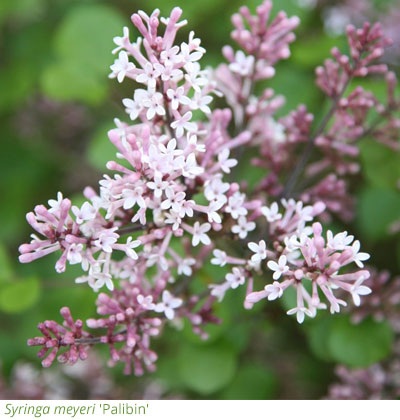 The lavender-pink flowers of Syringa meyeri ‘Palibin’ form dainty panicles above vivid-green, almost oval foliage. In the garden it will rise to shoulder height, but if it's contained in a large, rugged pot it will be shorter. ‘Palibin’ will be smothered in flowers in late-May or June and it's easily maintained. Just snip the faded flower heads off after flowering. If you want pinker flowers opt for Syringa pubescens subsp. microphylla 'Superba' - although this wouldn't do well in a container because it's too tall, reaching over five feet. The lavender-pink flowers of Syringa meyeri ‘Palibin’ form dainty panicles above vivid-green, almost oval foliage. In the garden it will rise to shoulder height, but if it's contained in a large, rugged pot it will be shorter. ‘Palibin’ will be smothered in flowers in late-May or June and it's easily maintained. Just snip the faded flower heads off after flowering. If you want pinker flowers opt for Syringa pubescens subsp. microphylla 'Superba' - although this wouldn't do well in a container because it's too tall, reaching over five feet.
Many of the old fashioned pinks, or Dianthus, are also noted for their evening scent, but more modern pinks are perpetual flowering and some are also scented. ‘Gran’s Favourite’ is the longest flowering pink of all and the pink petals are edged in raspberry-red, like rippled ice cream. It's highly scented and an excellent cut flower and this neat pink could edge a sunny border. All dianthus need bright light and good drainage and they get their common name of pink from the fringed edges of the petals (think pinking shears) of old varieties. They were often used to flavour drinks, in the days when water was often unsafe.
Montague Allwood was the first person to breed a perpetually flowering dianthus and his most famous variety, ‘Doris’, is still widely grown for its clove-scented peachy flowers. Plant breeders continue to raise long flowering pinks with fragrance and the new ‘Cherry Burst’ (from Whetman’s) looks very much like an old-fashioned pink - and it also has a clove scent. It's very neat and will flower perpetually in flushes all summer long.
The classic combination of the highly scented rose, in shades of pink, underplanted with a mixture of English lavender and a pretty pink dianthus is a tried and tested combination. Try the silver-pink rose ‘Olivia Rose Austin’ and the dark English lavender ‘Hidcote’ with Dianthus ‘Gran’s Favourite’. They’ll look and smell good too.
 Roses are amongst our most fragrant shrubs and most gardeners are apt to choose repeat-flowering roses because these will give you a glorious June flush followed by more roses. Most of David Austin's English roses are fragrant and repeat-flowering. The upright rose ‘The Lark Ascending’ comes in a soft sunset-yellow and it's particularly good with blue flowers such as Geranium ‘Orion’. It's also a perfect partner for coral-tinted peonies such as ‘Coral Charm’. Roses are amongst our most fragrant shrubs and most gardeners are apt to choose repeat-flowering roses because these will give you a glorious June flush followed by more roses. Most of David Austin's English roses are fragrant and repeat-flowering. The upright rose ‘The Lark Ascending’ comes in a soft sunset-yellow and it's particularly good with blue flowers such as Geranium ‘Orion’. It's also a perfect partner for coral-tinted peonies such as ‘Coral Charm’.
However it's roses that flower only once, in June or early July, that really drip with flower so every gardener should have some ‘once-only’ roses in their garden. By August they are over, but they may well be displaying small reddish or orange hips, so there is no need to deadhead. Most ramblers, such as ‘Rambling Rector’ which is a vigorous white, are glorious in rose time.
One border plant is always tremendous in August, and that is the border phlox. They follow the roses and they were a country house special because they cut so well for the house. Many have a sweet, cake-like perfume, not admired by all, and some of the paler ones look tremendous in evening light. Phlox paniculata 'Franz Schubert’, raised by the phenomenal plantsman Alan Bloom and named after his favourite composer, is one of the easiest border phloxes to grow, and its mauve flowers are stunning in evening light. Phlox generally need good soil, although this one is very tolerant.
Another stunning Alan Bloom plant is Achillea ‘Moonshine’. The grey foliage is finely cut and the sharp lemon-yellow flowers begin in early May and keep on coming in all weathers, until late. This needs good drainage and good light, but it will light up any sunny path - whether it's at midday or midnight.
|



